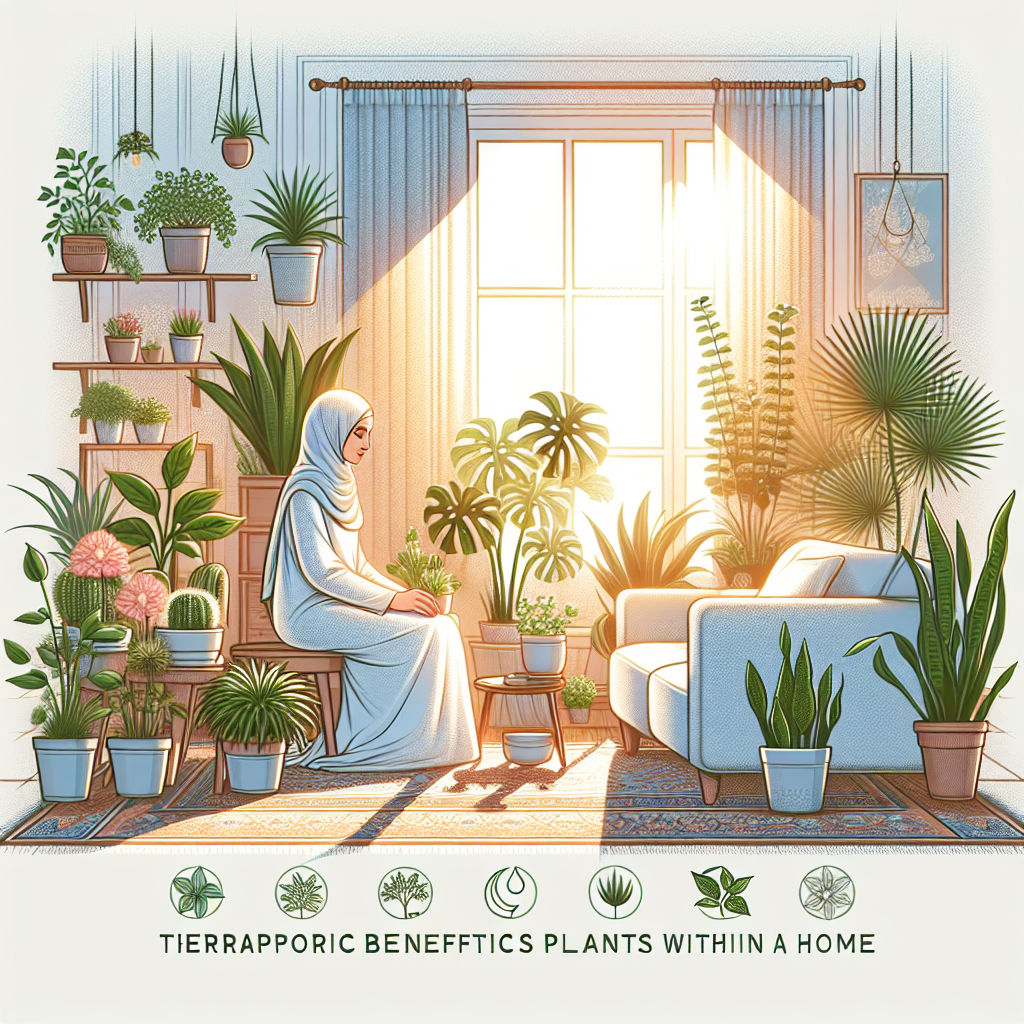Exploring the Therapeutic Benefits of Incorporating Indoor Plants in Home Design

Indoor plants have long been a staple in home design, adding a touch of nature and a splash of color to our living spaces. But did you know that these leafy companions offer more than just aesthetic appeal? They also come with a host of therapeutic benefits that can enhance your well-being.
Let’s start with the most obvious benefit: indoor plants purify the air. They absorb the carbon dioxide we exhale and release oxygen, making the air fresher and healthier to breathe. Some plants, like the snake plant and the spider plant, are particularly good at this, even filtering out harmful toxins like benzene and formaldehyde. This natural air purification process can help reduce headaches, respiratory problems, and allergies, making your home a healthier place to live.
But the benefits of indoor plants go beyond physical health. They also have a significant impact on our mental well-being. Studies have shown that being around plants can reduce stress and anxiety levels. The simple act of caring for a plant, watering it, and watching it grow can be incredibly therapeutic. It gives us a sense of responsibility and accomplishment, which can boost our mood and self-esteem.
Moreover, the color green has been associated with calmness and relaxation. Having green plants around can create a peaceful environment, helping us unwind after a long day. This is particularly beneficial in today’s fast-paced world, where finding moments of tranquility can be challenging.
Indoor plants can also improve concentration and productivity. A study by the University of Exeter found that employees were 15% more productive when their workspace was filled with just a few houseplants. The plants seemed to increase workplace satisfaction and improved focus, which can easily be translated to a home setting, especially for those of us working from home.
Incorporating indoor plants into your home design doesn’t have to be complicated or expensive. Start small with easy-to-care-for plants like succulents or snake plants. Place them in areas where you spend a lot of time
Maximizing Wellness: The Role of Indoor Plants in Enhancing Home Design and Mental Health
Indoor plants have long been a staple in home design, adding a touch of nature and a splash of color to our living spaces. But did you know that these leafy companions offer more than just aesthetic appeal? They also have a significant impact on our mental health, providing therapeutic benefits that can enhance our overall wellness.
The concept of incorporating indoor plants into home design for health benefits is not new. It’s rooted in the ancient Chinese philosophy of Feng Shui, which emphasizes the importance of maintaining a balance of energy in our surroundings. According to this philosophy, plants are believed to bring positive energy into our homes, promoting harmony and prosperity.
In recent years, this idea has been backed by scientific research. Studies have shown that indoor plants can improve air quality by absorbing toxins and releasing oxygen. This not only makes our homes healthier but also helps us breathe easier, reducing stress and promoting relaxation. Imagine coming home after a long day at work to a space filled with fresh, clean air. It’s like having your own personal oasis, right in the comfort of your living room.
But the benefits of indoor plants go beyond air purification. They also have a profound effect on our mental health. Research has found that being around plants can reduce feelings of anxiety and depression. This is because plants have a calming effect on our minds, helping us to feel more relaxed and at peace.
One study even found that patients in hospitals who had plants in their rooms reported lower levels of pain and discomfort compared to those without. This suggests that the presence of plants can have a healing effect, helping us to recover faster from illness or injury.
Furthermore, taking care of indoor plants can be a form of therapy in itself. The act of watering, pruning, and nurturing a plant can be a mindful activity, helping us to stay present and focused. It can also give us a sense of purpose and accomplishment, boosting our mood and self-esteem.
In terms of home design, indoor plants offer a versatile and
